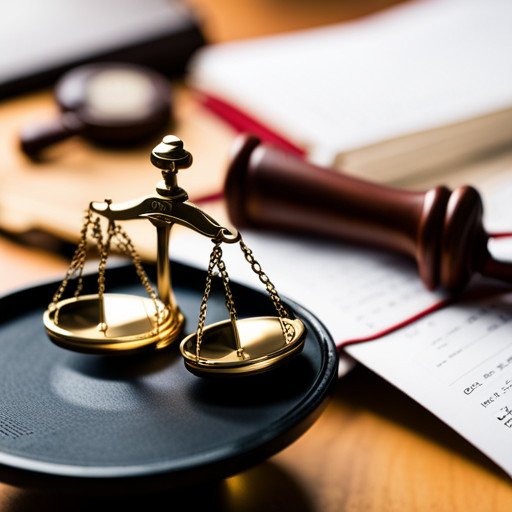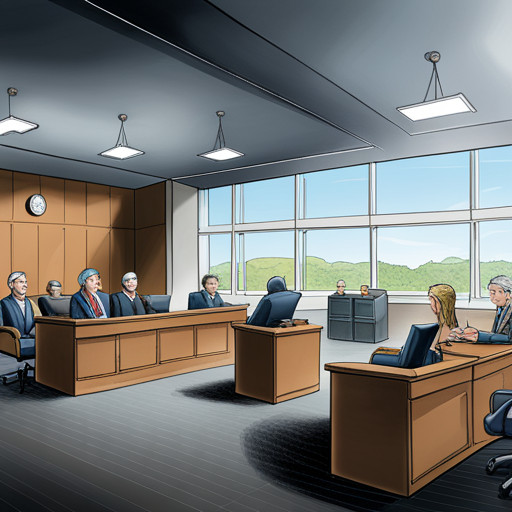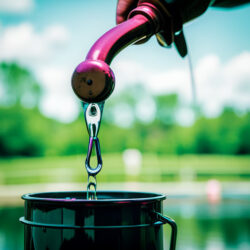The Role of Mass Tort Law Firms in Camp Lejeune Cases
This article elucidates the pivotal role of mass tort law firms in cases related to Camp Lejeune, a significant event in environmental legislation.

The focus is on the contribution of these firms in addressing complex legal and health issues arising from this case, exploring key legal challenges, victories, and future implications for mass tort law.
Key Takeaways
- The contamination of drinking water at Camp Lejeune between 1953 and 1987 caused catastrophic health effects, including cancer, neurological disorders, and reproductive issues.
- Mass tort law firms played a crucial role in representing victims in claims against the Department of Defense and addressing the widespread harm caused.
- Mass tort litigation led to legislative amendments, such as the Janey Ensminger Act in 2012, which granted healthcare benefits to affected veterans and emphasized military compliance with environmental laws.
- The Camp Lejeune cases set legal precedents that hold federal entities accountable for negligence and their duty of care in similar environmental toxic tort cases.
Understanding the Context: Camp Lejeune

A comprehensive understanding of the Camp Lejeune incident necessitates an examination of its historical context, environmental impact, and subsequent legal implications.
The event unfolded between 1953 to 1987 when drinking water sources at the US Marine Corps Base Camp Lejeune in North Carolina were found to be contaminated with volatile organic compounds (VOCs). The contamination was traced back to leakages from fuel storage tanks and indiscriminate disposal of industrial solvents.
The contaminated water's impact on the health of thousands of military personnel and their families was catastrophic. Research indicates that exposure to VOCs is associated with a range of detrimental health effects, including certain types of cancer, neurological disorders, and reproductive issues. This public health crisis highlighted the urgent need for stringent environmental regulations within military institutions.
The repercussions extended beyond public health concerns; they raised serious questions about military accountability. To address this issue, mass tort law firms began representing victims in claims against the Department of Defense (DoD). Their role became pivotal in seeking justice for those affected by the disaster. They faced significant challenges due to sovereign immunity principles protecting government entities from prosecution.
However, these mass tort actions led to legislative amendments establishing precedents for holding military institutions accountable. Notably, it resulted in the passage of 'The Janey Ensminger Act' in 2012, which granted healthcare benefits to affected veterans and their families. This legislation emphasized that while protecting national security is paramount, it should not exempt the military from complying with environmental laws or being held accountable for negligence causing harm.
The Relevance of Mass Tort Law in Environmental Cases

In the realm of environmental litigation, the significance of broad-based legal actions cannot be understated, as they often serve to address widespread harm caused by pollution or contamination. A prime example would be mass tort law's pivotal role in addressing cases like Camp Lejeune, illustrating the development and effectiveness of tort law evolution.
Mass torts, characterized by large numbers of plaintiffs against one or few defendants, are instrumental in enforcing environmental liability. The concept holds responsible parties accountable for causing environmental damage and compensates victims for their suffered losses. This principle has been solidified and expanded over time due to the evolution of tort law.
These lawsuits also serve a dual purpose: offering compensation for victims and acting as powerful deterrents against future negligent behavior that could lead to environmental damage. As such, mass tort litigation plays a vital role in maintaining ecological balance by ensuring adherence to legislative mandates designed to protect the environment.
This approach creates an effective mechanism within the legal system that upholds environmental liability principles while providing justice for those affected by pollution or contamination incidents like Camp Lejeune. Thus, it is clear that mass tort law firms hold significant relevance in addressing wide-scale environmental disputes.
The Function of Mass Tort Law Firms in Camp Lejeune Cases

Handling legal disputes of considerable scale, such as those arising from contamination incidents, shows the essential functions that broad-based litigation entities perform. In this context, the function of mass tort law firms in Camp Lejeune cases becomes evident. These legal conglomerates possess comprehensive knowledge of environmental legislation and mass tort law, which is vital for offering victim representation.
Such firms utilize well-crafted litigation strategies to challenge responsible parties who have caused widespread harm due to negligent or intentional actions. With a focus on detail-oriented research and investigation, they can decipher complex issues surrounding water contamination at Camp Lejeune.
The scope of such disputes necessitates an understanding beyond standard tort law principles; it demands proficiency in mass tort rules that govern numerous claimants against single defendants. Mass tort law firms are equipped with resources and expertise to represent large groups affected by similar injuries or damages, highlighting their indispensable role in resolving these claims.
Victim representation involves not only presenting individual cases but also ensuring fair compensation for all involved parties. To achieve this balance, litigation strategies must be developed meticulously, considering both collective interests and unique circumstances surrounding each case.
Thus, the value brought forth by these entities extends beyond just legal assistance: they provide a platform for collective action against massive corporate negligence, often seen in cases like Camp Lejeune's contamination situation.
Key Legal Challenges and Victories in Camp Lejeune Cases

The primary challenge in these cases was establishing causation, which required linking specific illnesses to exposure to contaminants at Camp Lejeune. This necessitated scientific studies and expert testimonies, adding layers of complexity to an already challenging legal process. Moreover, the statute of limitations posed another major hurdle, as many diseases manifested years or decades after exposure.
However, despite these obstacles, several victories were achieved. In 2012, Congress passed the Honoring America's Veterans Act that included provisions for healthcare for certain conditions presumed associated with water contamination at Camp Lejeune. Further triumph came when the courts ruled that state statute of limitations did not apply to federal tort claims in such situations.
These victories set important legal precedents by recognizing the right of military personnel and their families to seek recompense for harm caused by environmental exposures during service. Furthermore, they helped define factors considered when determining victims' compensation, including severity of illness and duration of exposure.
The Future Implications of Camp Lejeune Cases on Mass Tort Law

Future implications of such litigation cases on large-scale personal injury lawsuits warrant examination, considering the legal precedents set and the challenges overcome during these proceedings. These cases highlighted a critical issue: the need for comprehensive documentation to link health issues with environmental exposure.
Legal precedence stemming from these cases provides an extensive groundwork for future actions. The ruling that those suffering due to contaminated water at Camp Lejeune could bring claims outside of state statutes of limitations is momentous. This landmark decision may shape how courts interpret time limits in similar mass tort claims, particularly where symptoms manifest years after exposure.
Moreover, another important aspect worth noting is related to federal entities' responsibility in such instances. Typically insulated by sovereign immunity laws, this case saw the U.S government held accountable for negligence, leading to widespread health issues among military personnel and their families.
The success of Camp Lejeune litigations also highlights the importance of scientific evidence in establishing causality between exposure and illness. Future litigation must ensure rigorous scientific investigation forms part of their strategy if they are to succeed against well-defended defendants like military bodies or multinational corporations.
Frequently Asked Questions
What Specific Qualifications Should a Lawyer Have to Handle Camp Lejeune Cases?
To handle Camp Lejeune cases, legal practitioners require comprehensive knowledge of environmental legislation and mass tort law, expertise in tort litigation strategies, and the ability to articulate complex legal challenges inherent in such situations.
How Long Does a Typical Camp Lejeune Case Take to Reach a Verdict?
The duration of a typical Camp Lejeune case varies considerably, influenced by numerous verdict factors. Specifically, the case timeline can be affected by complexities in environmental legislation and intricacies associated with mass tort law.
What Are the Compensation Packages Usually Like for Victims in Camp Lejeune Cases?
Compensation packages for victims in Camp Lejeune cases typically reflect the severity of health impacts and environmental contamination effects, calculated through stringent legal processes. These may include medical costs, loss of earnings, and non-economic damages.
Are There Any Notable Lawyers or Law Firms That Specialize in Camp Lejeune Cases?
Certain legal entities, notable for their focus on environmental litigation and mass tort law, specialize in Camp Lejeune cases. These firms pursue Marine Corps accountability while utilizing health impact studies to substantiate claims.
Are There Other Cases Similar to Camp Lejeune That Have Had a Significant Impact on Mass Tort Law?
Significant cases similar to Camp Lejeune, such as the Love Canal and Exxon Valdez incidents, have indeed impacted mass tort law, setting key precedents in environmental exposure impact litigation.
Conclusion
The role of mass tort law firms in Camp Lejeune cases emphasizes the significance and complexity of environmental legislation.
These firms act as pivotal players, navigating the intricate landscape of legal challenges while striving for justice for those affected by environmental hazards.
As seen in Camp Lejeune cases, their contributions often lead to significant legal victories that shape future implications on mass tort law.




